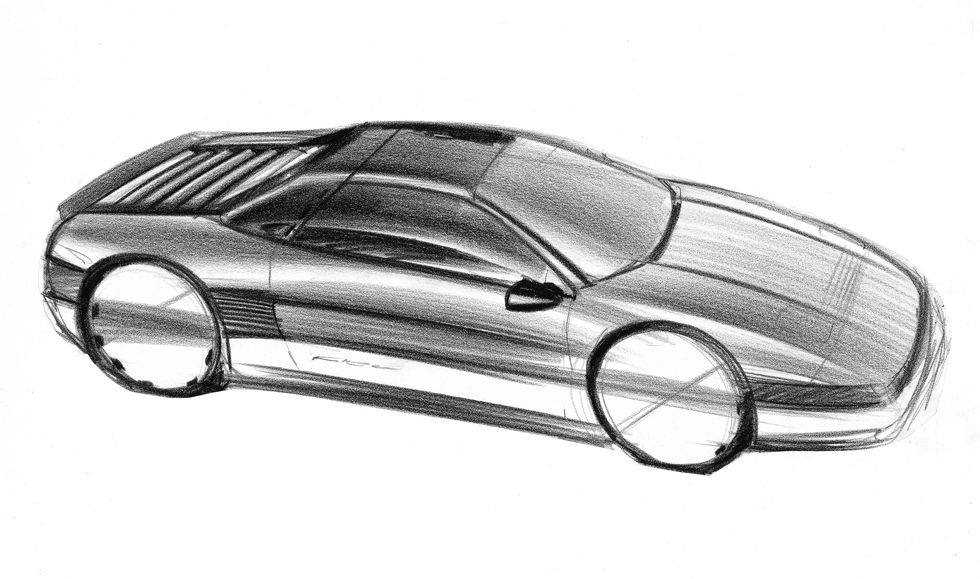From the February/March issue of Car and Driver.
When introduced in 1984, the Pontiac Fiero wasn’t marketed as a sports car. Though it was General Motors’ first mid-engine production vehicle, the automaker designed the Fiero to “drive back and forth to work and be efficient,” says John Schinella, chief designer on the project.
But over its five-year run, the Fiero became sportier, adding V-6 power, more aggressive styling, and a redesigned suspension. It was a hit, selling nearly 300,000 units in the first three years, allowing Schinella—a veteran designer of the 1965 Cadillacs, the first-gen Camaro, and the third-generation Corvette—to start on a successor.
The Fiero used an innovative metal unibody skeleton with a plastic skin. Chosen mainly for its cost, the structure had a side benefit. “It was like an erector set. You build the frame and then you could put any body on it you want,” Schinella says. “So we were excited, because we could go after a sportier-looking car and we could just do what we wanted with the skins.”
As with the first-gen Fiero, the team ended up creating a pair of distinct models: a base car with a more restrained wedge design and a GT with a sportier Ferrari-aping fastback profile and flying buttresses. “We were all hands on deck on that one. Let’s make it the best we can for who it was for,” Schinella says.
GM upgraded all relevant components and considered proper performance powertrains, including the Quad 4 16-valve inline-four and (allegedly) a turbocharged V-6. Porsche Engineering assisted with dialing in dynamics. There was even buy-in from the higher-ups. “Nobody got in our way,” Schinella says.
But over time, the Fiero revealed its limitations. Shoddy build quality and engineering defects resulted in major issues. Two-seaters were on the decline overall, and superior- performing vehicles like the Honda CRX Si and Toyota MR2 ate up what remained of the category.
Sales plummeted. “In 1987, the Fiero’s dedicated plant built just 46,581 units, about 20 percent of capacity, which made no economic sense,” says veteran automotive journalist Gary Witzenburg, who literally wrote the book on the car, Fiero: Pontiac’s Potent Mid-Engine Sports Car.
Despite the handsome new look and giant-killing performance potential, these limited prospects sealed the Fiero’s death sentence. This saddened the team. “It was a heartbreaker for us in the studio and for Pontiac when that went away,” Schinella says. But it wasn’t exactly surprising. “I spent a lot of years with GM,” he says. “It seemed we’d just get something nice, and then we’d get rid of it.”

